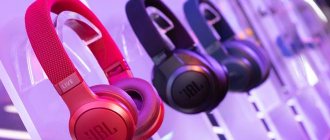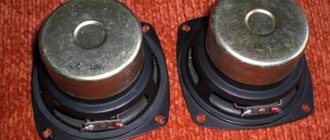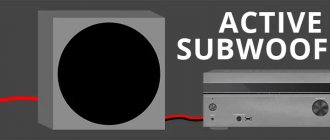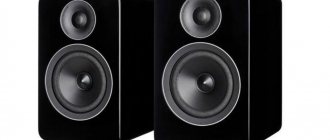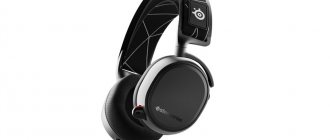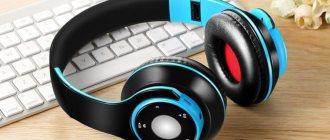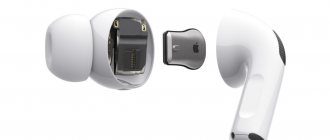Headphones are our everyday companions when traveling, jogging, when listening to music at home, as well as an integral part of the work of DJs and standard equipment in every recording studio. Each type of headphone has its own characteristics, and to take into account all the pros and cons, you need to arm yourself with as much knowledge as possible before purchasing the equipment for yourself.
The main and most important difference between headphones is based on their design. In some aspects they differ from each other, but in others they have similar features.
Open and closed headphones
Experts interpret openness this way - it is a slight isolation on both sides when listening to music tracks, the melody is audible to others, and the user catches all extraneous sounds.
Such headphones do not have effective protection from external sounds, and the outer part of their design is made in the form of perforations or mesh, through which external sounds freely penetrate inside, and the music is heard by others. Open headphones are most suitable for listening to works with an abundance of high and mid frequencies, i.e. for lovers of the classics. Devices with a closed design are products with good sound insulation that do not allow sound to pass through either from the outside or from the inside.
Therefore, closed-type headphones have the following features:
- They are equipped with dense ear pads to ensure a complete fit to the ears.
- In full-size analogues, the ear pads completely cover the auricle, creating a certain acoustic space inside for a more comfortable perception of sound effects.
- The outer part of the devices does not have cracks or perforations, so sound does not penetrate outside and is not heard by strangers.
These devices are attractive to fans of rock or metal because the bass is heard most noticeably and clearly.
What's the difference between them
The difference between closed and open headphones can be represented using the following key points:
- The open ones do not have components that can provide complete isolation from external noise, while the closed version, on the contrary, is equipped with reliable insulation from the penetration of sounds in any direction. The first option is ideal for lovers of classical music, while the second is ideal for metalheads and rock fans.
- Open products are good for use at home, as well as in places where listening to your favorite tracks will not disturb others. Closed devices, on the contrary, are suitable for public places and offices.
Only high-tech headphones can provide high-quality and complete isolation; budget models provide normal listening only in enclosed spaces with low and medium noise levels.
Combined models are available - half-open or half-closed, so you can find any option for yourself.
https://youtube.com/watch?v=qXuw_Cfy61E
Characteristics
All main parameters are indicated in the product passport; we will not list them; they will be described specifically for each model in a special section below. It is only worth noting that some products come with noise insulation made in various ways - these could be, for example, thick ear pads made of genuine leather that tightly cover the ear, not letting in external noise and preventing sounds from leaking out.
The design may be different, but the essence is the same - reliable protection from extraneous noise. In addition, some models are available with noise reduction for distortion and other sounds that appear during playback of the installed equipment.
frequency range
Another parameter that needs to be analyzed to select models with high-quality sound. Headphones with good sound have a frequency indicator of 18-2000 Hz. High-priced professional models typically have a frequency level of 5-60 kHz. For in-ear headphones, the parameter is slightly reduced.
The frequency indicator provides little information about the quality of the device, because the range of deviations is rarely indicated. The frequency range allows you to form a general impression of the capabilities of the device, and it is better to obtain detailed information that can be used for analysis from the frequency response. This applies to all types of devices, from professional studio models to simple in-ear headphones.
The frequency indicator is often used to compile top headphone reviews, as well as to compare options in terms of sound quality. This approach is not fully correct and justified, because it is necessary to evaluate all the characteristics of the headphones as a whole.
Receiving a signal from the source
Depending on how exactly the headphones are connected to the gadget, they are divided into two types: wired and wireless. The first ones are connected via USB or a regular 3.5 mm mini-jack.
This is not just a home option. These headphones are worn both during walks and during training. You just need to find the optimal length of the cord - 1.2-1.3 meters. It will not hinder movements and will not interfere much.
3 types of wireless connection:
1. Radio. This option has the highest reception radius - up to 100 meters. The declared figure coincides with reality only in open areas: walls and furniture can interfere with the signal and worsen the sound.
2. Bluetooth. Although the distance here rarely exceeds ten meters, the signal is not afraid of partitions, and it is not afraid of radio interference. But the main advantage of such headphones (for example, ONKYO E200BTB) is compatibility with most types of modern technology. They can be connected to a laptop, smartphone, smart watch and any other gadget that has a Bluetooth module. The sound quality of such headphones is an order of magnitude higher than in the same radio models, but it is still far from devices with a wired connection. As a rule, Bluetooth headphones are used for voice and video communication, as well as during training, and do not claim to be an audiophile device.
3. Wi-Fi headphones. As with Bluetooth, their main advantage is their compatibility with most modern multimedia devices. But the Wi-Fi signal is more timid: the sound quality can be affected by electrical appliances, reflective surfaces, and weather conditions.
Interesting: Sennheiser PXC 480 can be connected both using a wire and without - via a radio channel.
There are also IR headphones that synchronize with devices via the corresponding port, but this type is already outdated.
You may need: Top 5 headphone models for sports
What should you pay attention to?
Often, without understanding how to choose gaming headphones with a microphone, the search becomes no less difficult than, for example, searching for a new high-performance video card. This article will discuss the main aspects that are important to consider when purchasing a gaming headset. First of all, when selecting a quality device, you need to decide on the most important aspects:
- method of connecting to the sound source (wired or wireless);
- headset form factor;
- speaker and microphone characteristics;
- design.
Almost all gaming headsets use regular audio cables to connect to a sound source. At the end of the wire of such headphones there is either one multifunctional 3.5 mm connector capable of transmitting audio and voice, or two separate connectors - for audio and microphone. These headsets can be used with any gaming platform.
Headphones that connect to a PC using a USB port provide more options. Due to additional power supply, these models boast surround sound systems, active microphone noise reduction, LED backlighting and other means that improve comfort during the game.
Analog headphone models with a classic cable connection can be equipped with small sound cards connected to a computer via USB. External sound cards can significantly expand the functionality of headphones by activating 5.1 or 7.1 surround sound. Such solutions are easy to customize and compatible with all operating systems.
You can choose gaming headphones for your computer that use wireless technology to transmit sound. Such models cost an order of magnitude higher, but give their owner more opportunities.
The advantages of such headsets are a capacious battery and a range of about 10 meters. In addition to the high price tag, there is another negative side - the inability to use in conjunction with stationary consoles. Most often, radio modules are responsible for the operation, the operation of which requires the additional connection of an external transmitter.
There are also models that use Bluetooth for data transfer. These headphones are connected both to the module built into the PC and to the included USB adapter. In any case, manufacturers of wireless headsets take care of their users and equip their models with everything necessary to organize uninterrupted and high-quality communication.
Ease of use
For some, the answer to this question may be obvious, but I want to take a closer look at the differences in the usability of gaming headphones and headphones for listening to music. When the purpose of headphones is to convey an acoustic background to the listener or focus his attention, we tend to reduce the expected level of comfort to a satisfactory level. It doesn't really matter if you pay attention to the headphones as long as they don't cause painful discomfort. First of all, they are expected to have good sound quality, and convenience comes second. Of course, this is a subjective assessment, but let's see how gaming headphones fare.
Their main tasks are stability of sound transmission and a secure fit on the head without excessive discomfort. Sound quality is undoubtedly a priority, but it will not matter if after a couple of hours of the gaming session your head will be buzzing with pain. In the MMORPG genre, during long streams or at e-sports competitions, six or more hours of comfortable use are expected from such headphones. Convenience is a priority, which means that some Jecklin Float does not fit here at all. In my experience, gaming headphones outperform their high-end counterparts with an improved, that is, more secure fit. This is especially noticeable during active play with frequent head movements, because The level of secure fit is much higher, which lightweight headphones sometimes cannot boast of.
The ear pads of gaming models are usually made of velor, microfiber or artificial leather. Undoubtedly, genuine leather feels and looks expensive, but when heated it becomes wet and slippery. Faux leather and leatherettes are pleasant to the touch and less distracting when covered in moisture. On the other hand, such materials are much more difficult to clean. Some gamers prefer velor, which, despite increased heat transfer, does not slip when wet, but quickly wears out and gets dirty.
Therefore, ear pads and fixation are quite important parameters when selecting gaming headphones. In this regard, it is worth highlighting the Audeze Mobius model and the Sennheiser line of gaming headphones. They lack some of the comfort I enjoy when listening to audiophile models, but they run cooler and have a firm grip that makes them worthwhile in long gaming sessions.
Headset cup type
Over-ear headphones (gaming) can be divided into open-type, semi-open and closed-type headsets.
An open headset allows you to hear the doorbell, phone ringing, the sound of an approaching car, etc. Air circulation in such a gadget will be better than in a closed one. At the same time, besides you, slightly muffled sounds will be heard by those around you. This version of the gadget is better to buy for listening to music.
Semi-open headphones are a headset whose ear cups have holes. This ensures normal sound insulation and prevents ear fatigue. This gadget is often used by professionals, and in terms of its performance it is closer to open devices, since it still allows external noise to pass through.
Closed headset - headphones with a good soundproofing housing, allow you to enjoy the low frequencies directly. You will experience deep and powerful bass. This is achieved by the fact that in the bowl of the gadget there is a sealed environment around the membrane, and there is nowhere for the air to escape.
A closed-type headset creates sound pressure on the hearing organs, resulting in hearing fatigue. It is also common to experience headaches after prolonged use of the gadget. Therefore, if the question arises, which headphones are better, you should buy a semi-open type headset.
As a budget option, you can purchase earbuds (in-ear or vacuum). They are compact in size and lightweight. During operation, the drops become almost invisible to the user. But the sound quality in them is inferior to overhead gadgets.
If the cost of a headset is not a major factor for you, then droplets from well-known brands will be able to provide a full range of high-quality sound, from bass to high frequencies.
Sound
The biggest differences between audiophile and gaming headphones are probably the sound. Game sounds naturally depend on the game genre, but dialogue, midrange and high-frequency sounds have a short transient response and increased dynamic range. Therefore, gaming headphones, compared to regular audiophile headphones, will not tire the listener much. The sounds can be very different: footsteps, voices, shots, piercing sounds mixed with the roar of explosions or the growling of monsters. This greater variety of frequency response means that the clarity of the sound picture is much more important than its overall warmth.
This is especially applicable to the FPS genre, where the orientation and placement of sound in space is a critical element of the gameplay. In such conditions, softness of sound or acoustic background is not as important as clear or even slightly exaggerated detail, especially in the high frequency range. The HF curve in gaming headsets is somewhat steep compared to audiophile headphones.
A useful feature would be the ability to configure multiple profiles and change the frequency response of the headphones for different game genres. For FPS or other games that require high definition, the Beyerdynamic Custom Game headset is suitable, which has adjustable bass and the typical Beyer high treble. They're not recommended for audiophiles for listening to music, but they're exceptionally good for gaming and can be customized for less fast-paced genres like RPGs or simulations if needed.
A country
Many well-known European and American companies are engaged in the production of headphones designed for computer games. Popular brands are represented by the following countries:
- USA – Kingston, V-MODA, JBL;
- Europe – Sennheiser (Germany), Logitech (Switzerland), Roccat (Germany), SteelSeries (Denmark);
- China – ROG (owned by Asus brand), A4Tech, Thermaltake;
- Japan – Audio-Technica, Sony, Denon.
Recently, the Russian brand Qcyber has also been gaining momentum, producing not only headsets for different platforms, but also other equally relevant equipment for e-sportsmen.
Open headphones:
In this design, the rear wall of the bowl has holes whose area is comparable or larger than the size of the speaker. Those. The rear side speaker plays directly to the street.
As you can see, the speaker of the Sennheiser HD600 headphones is freely visible from the outside through the mesh.
Due to this design, the headphones are unsuitable for use in transport and are of little use for outdoor use. because In addition to the fact that those around you will listen to the same thing as you, all external sounds will also be mixed into your music.
But open-back headphones have excellent stereo range and stage depth if you listen to them at home and in silence. These headphones are also great for use in games, contributing to the effect of presence.
Not only full-size headphones are made open. The Koss Porta Pro on-ear headphones, beloved by many, are also often positioned as open-back headphones. To make sure of this, you should take a closer look at the many holes on the blue plastic. Although, in principle, they can be considered semi-closed.
As for plugs, here too there are representatives of the open type. For example, open headphones from a fairly young but actively developing company KZ model Edr2. If you look closely at them, you can see a fine mesh on the back of the earphone.
Features of closed accessories
Accordingly, closed accessories are characterized by higher isolation, both for the listener and others. Such devices have their own unique features:
- closed models are most often equipped with ear pads, which ensure a tight fit to the head;
- in full-size or monitor models, there is a complete fit around the ear;
- The side edges of the cups do not have holes so that the sound does not go beyond the accessory.
These headphones are most attractive to people who prefer to listen to music at low frequencies, such as rock or metal. The bass that is present in such melodies is the most noticeable.
Speaking about closed models, it is worth clarifying that the quality of sound insulation is ensured not only due to the design features of the type; this parameter largely depends on the material of the case. For example, wooden or leather headphones will transmit sound better than metal ones.
When buying closed devices, you should remember that using them for a long time can lead to fatigue and headaches, since they create quite high pressure. The listening time of such devices should be limited, since the pressure of the sound flow is quite strong and strains the hearing organs.
Professional closed headphones Beyerdynamic DT 770 PRO
Table
| Open headphones | Closed headphones |
| Does not isolate the reproduced sound, allowing the user to hear environmental noise | They assume the achievement of maximum isolation of those sounds represented by playing melodies and noise surrounding the user |
| Optimal for playing music at medium and high frequencies - instrumental, orchestral | Optimal for playing music at low frequencies, with bass - in the style of rock, metal |
| Does not fit tightly to the head, the wall of the cup is mesh or with holes | Fit tightly to the head and ear, the wall of the cup has no holes |
Design features
To choose good headphones, you should first pay attention to the design features. It affects not only convenience, but also sound quality
5 types of models:
- inserts (“tablets”);
- intra-channel, they are also plug-in, they are also vacuum;
- invoices;
- studio (monitor);
- full size.
The first two types of models have one thing in common - compact sizes: such headphones can easily fit even into a small pocket. The remaining models are larger in size: unlike the small options, they have larger emitters for more powerful sound.
Little ones
“Tablets” (earbuds) are often included with mobile gadgets. Such models are placed in the ear and do not fit tightly. This reduces the level of isolation from extraneous noise, but if you use them for a long time at high volume, your head will not hurt.
Tip: It's worth giving preference to earbuds with a behind-the-ear attachment, like ActionFit: they will stay in place better.
In-ear models themselves hold up better and isolate from ambient noise than earbuds. The point is in the design itself: they are immersed in the ear canal. This gives the user the opportunity to immerse themselves in the atmosphere of their favorite tracks and has a positive effect on the transmission of the entire frequency spectrum.
In-ear models sound an order of magnitude better than the same earbuds, but they are still inferior to overhead ones, although they compare favorably with them in size.
Note: In vacuum devices with a microphone, such as the ATH-CKR30ISBK, you can listen to music and answer calls.
Large
The ear pads of on-ear headphones cover the ears, but do not completely cover them. Such models sound better than compact versions. But, nevertheless, overhead devices cannot boast of such noise insulation as, for example, vacuum ones.
Full-size models, compared to the three types described above, are leaders in terms of sound quality, but cannot boast of being compact. Unlike over-ear ones, the ear pads of these models cover the ear completely, providing rich, dense sound. This option is perfect for home use when you want to experience all the colors of sound at a decent volume without disturbing your household.
Tip: Sony MDR-XB550AP will provide rich bass thanks to proprietary EXTRA BASS technology.
Studio (monitor) headphones are the same full-size models that are designed primarily for working with sound. They are used by sound engineers and musicians to record compositions. They are produced by many manufacturers, for example, Audio-Technica and Beats by Dr. Dre.
The difference between studio headphones and others is their high level of detail and sound insulation, and a well-balanced frequency spectrum. These headphones are often purchased by audiophiles because of their spacious, rich sound. These models are more expensive than others. They also weigh more due to the large speakers.
Note: when choosing these headphones to listen to music at home, it is worth remembering that these models are extremely demanding on the quality of recordings. Tracks of average, and even lower quality, will not sound the best: detailed sound will “bring to the surface” all the errors.
Which option is better to choose depends on the place where the headphones will be used and their intended purpose. For home use, it is better to choose on-ear and full-size headphones. Monitor models are suitable for professional work with sound, as well as for complete immersion in gameplay. For sports, travel and walking, more compact options will be more convenient.
Resistance
A parameter that determines the volume and sound quality. All devices have an impedance indicator - the nominal input resistance of the headphones. The best over-ear headphones designed for PC have an increased rating of 32 ohms and above. For smartphones and tablets this parameter is slightly higher. Headphones with good sound provide good resistance to incoming signals, acting as a kind of filter. To know how to choose the right headphones based on this indicator, you should understand the difference between low-impedance (up to 100 Ohms) and high-impedance (over 100 Ohms) options. Regarding full-size models, the second option looks preferable due to its higher sound quality.
In-channel models, or plugs with earbuds, have reduced resistance values and are divided into high and low at 32 ohms. If you know the resistance parameter, you can decide which headphones are best to choose faster and more correctly, in accordance with your needs.
Resistance is the basis of good-sounding headphones, so this parameter should not be neglected. If you decide which headphones are best to buy, then evaluate them additionally from the point of view of resistance parameters. Headphones with really good sound will have a high level of this indicator.
Hi-Fi and Hi-End headphones
Its sound depends on what class the device belongs to. The Hi-Fi badge means that the model reproduces sound to the highest standards, as close as possible to the original. Hi-End headphones are already exclusive. They are not equated to any standard, but are made to the highest standard, using the latest technologies and revolutionary solutions. It is thanks to this that headphones, which are classified as Hi-End, sound better than any other models.
Note: Hi-End options are made by such “monsters” of audio equipment, such as AKG, BEYERDYNAMIC and SENNHEISER.
The difference between these classes of equipment is not always noticeable by ear, and the gap in price is quite serious. Audiophiles often choose hi-fi. Those who work with sound professionally, for whom super quality and detail are important, can also use Hi-Fi devices, but give preference to high-end ones.
Note: ATH-MSR7BK is one of the most comfortable Hi-Fi models, because it has memory foam ear pads.
It is impossible to unequivocally answer the question of what is better and what is worse, because each person hears differently. To understand which model is needed, it is worth listening and comparing the options of both classes. If you can’t hear the difference, then you shouldn’t overpay for Hi-End.
Useful to know: How to extend the life of headphones: more than 10 tips
Closed headphones
If the headphone design is closed, then the headphone cup hermetically closes the speaker from the back. In this case, the volume of air inside the bowl acts as a load for the speaker.
Often, these types of headphones experience a roll-off in the low-frequency region, caused by a lack of internal volume in the earcups for these frequencies. Therefore, designers are forced to use various techniques to increase the low frequency range. For example, in the Sennheiser HD380 Pro headphones, a kind of bass reflex is implemented for these purposes, due to which the lower reproduced frequency is only 8 Hz.
Also, to increase the internal volume, damping is often used. At the same time, for some reason, manufacturers themselves usually don’t bother with damping and simply don’t do it. I already talked about the damping of the Sennheiser HD 380 Pro earlier.
A closed design is often characterized by a not very wide stereo base and stage depth. Both of these indicators improve with properly selected damping. However, they usually still do not reach the values of an open structure.
On the other hand, not all styles of music require a large stereo base and depth. For example, for heavy styles of music, for a denser and “rocking” sound, in my opinion, a closed design is better suited. But for atmospheric music, an open design is preferable.
About what really matters: selection parameters
When choosing headphones, and not only headphones, you need to determine for yourself the main parameters that interest you
Based on them, you can choose exactly what you need, will help you with your work or brighten up moments of waiting, allowing you to enjoy music where it is important and needed
Everything is extremely simple. Before going to the store, you should answer questions for yourself in the following areas:
Price category. Determine how much you are willing to spend on equipment
At the same time, it is important to approach the issue wisely, because headphones for 500 rubles are unlikely to help when mixing musical material. And full-size headphones for 30 thousand
counterintuitive to use on a treadmill.
Mode/nature of use. You need to understand exactly what you need them for. If you are a studio sound engineer, then DJ headphones are unlikely to suit you.
The shape and design of the headband, cups and their connection points. For example, a DJ would benefit from rotating and folding cups, but this is not the main thing for working in a studio.
Wire length/shape. If you want to listen to music from a player or phone on the road, then it makes sense to look for models with a short wire, and DJs are usually recommended to use models with a twisted wire.
Sound preferences. Some people prefer the bass buzzing in their heads and their eyes twitching when the kick drum hits, while others listen to the classics.
So, we come to the main thing, where you should always start when choosing headphones and other items for personal use.
Only practice will help you
No one will help you with your choice! These are your ears. They work differently for each person. It's your head, so headphones that are comfortable for one person may not be suitable for another.
Our article is not intended to determine the specific model you will purchase. We want you to clearly answer some questions for yourself that will help you narrow down your search. These are exactly the questions that the seller will ask if you haven’t fully decided on the model. After this, you will be offered 2-3 copies of devices, from which you will select the appropriate one.
And now that you know what questions need to be answered, you can determine for yourself several models from which you will need to choose in the store. In any case, make the final decision only after listening.
Let's look at a few examples
I work in a studio and need headphones to listen to material, work in editing or while recording. Based on this, I need models that are comfortable and suitable for long-term work. Closed because it is impossible to use open ones during recording. I'm ready to spend up to 20 thousand on this.
For example, these models are suitable for me:
- AKG K271 MKII,
- AUDIO-TECHNICA ATH-M50x / M 70x,
- SENNHEISER HD 280 PRO / HD 380 PRO,
- BEYERDINAMIC DT 770 PRO.
The list includes models costing from 10 to 20 thousand rubles, and these are the ones I will listen to in the store.
Let's consider another option. Let's say that I need headphones for a vocalist (or other performer). I'm ready to spend about 5 thousand rubles on them. They should be light so that the vocalist does not get tired, closed so that the sound does not enter the microphone. Additionally, a long thin wire is required.
Accordingly, I will choose from the following models:
- AUDIO-TECHNICA ATH-M20x/30x,
- AKG K72/92.
We received four models, costing from 4 to 5.5 thousand rubles. Already in the store I will determine which ones are right for me: I will listen, look, touch.
And now about closed-back headphones
This headset has a closed housing, which prevents the sounds produced by the speaker from dissipating outward. However, an even greater advantage of this design is that external noise will not get inside.
This structure allows the bass to sound louder and clearer. This happens because the sealed structure prevents air from escaping. In general, fans of rock and heavy metal will be delighted.
Also, unlike an open-type headset, the ear pads in such headphones always completely cover the ear. This only improves the already good sound insulation.
When choosing an accessory, you should pay attention to the material from which it is made. Sound insulation also depends on this factor
For example, wood or leather will transmit sounds more strongly than plastic.
But the headband and ear pads can cause considerable discomfort: in hot weather, the ears often sweat, and due to their tight fit to the head and ears, strong pressure is created. The ears and head may feel uncomfortable tension or pain. Therefore, it is not recommended to wear such headphones for a long time.
Headphones with microphone
To choose the right headphones based on their characteristics, you need to have a general idea of what you expect from the device.
If you need a microphone (especially important for online games), you should pay attention to the special characteristics of this element:
- Mounting method and the ability to adjust the position of the microphone. The mount should be selected to be strong enough, but capable of movement. An excellent solution is a device on a special holder. The alternative, with a wire mount, does not provide sufficient comfort.
- The presence of a noise reduction system in the microphone. This is important to ensure high quality of transmitted information.
Loud headphones with a microphone are the best option for gamers, but this option is not the best for listening to music, because the microphone simply disturbs the user.
Facts about closed-back headphones
In turn, closed-back headphones have a design that provides increased sound isolation - both for the user in terms of perception of environmental noise, and for other people in terms of audibility of the melodies listened to by the wearer of the headphones.
The cups of devices of the corresponding type have certain features. As a rule, they are equipped with ear pads that fit tightly to the head and also fit around the ear (again, if we are talking about full-size or “monitor” headphones). The side wall of the cups in closed devices usually does not have holes that, as in the case of devices of the first type, would allow sound to escape.
Closed-back headphones are generally more optimal for listening to low-frequency sounds. If there is a noticeable amount of bass in the melody, then they will be reproduced through such devices in a sufficiently rich and deep way. That is, closed headphones are best suited for playing rock music, metal and other compositions where bass is present.
The main difference between open and closed headphones is that the former do not have elements in their design that provide sound insulation, while the latter are designed precisely to achieve its maximum level.
Open-back headphones are optimal for listening to high and mid frequencies typical of classical instrumental and orchestral music. Closed ones are best adapted for playing songs that contain a significant percentage of bass. This is usually rock music, metal.
Open headphones are ideal for listening to music at home or on vacation in places where this way of spending time will not disturb others. Devices classified as closed are better suited for use in the office, on public transport, and on city streets.
It is worth noting that only the most high-tech models of closed headphones can provide complete sound insulation. Budget devices are most often designed for this function to be performed only at a moderate level of sound volume or environmental noise.
Likewise, the user can expect reference quality sound quality for melodies at high and mid frequencies only when using open-back headphones of the Hi-End category. Budget model devices, as many music lovers note, are not always able to reproduce songs at the appropriate frequencies so that they sound disproportionately better than when using closed headphones.
Having determined what the difference is between open and closed headphones, let’s add our findings to the table.
He who has “ears”, let him hear – criteria for choosing headphones
Today, almost everyone uses headphones. The choice of a particular model, design, and principle of operation of headphones is largely determined by the scope of their application. In this material, we described what you should first consider when choosing headphones. Deliberately distancing ourselves from headsets and highly specialized devices, we focused on those headphones that are used for listening to music, watching videos, and also talked about some professional devices for recording studios and concert use. Due to the fact that the topic is very broad and the factors that influence the choice are enough for 10 articles, in this material we decided to give general information about the design and technical features of headphones of different types and purposes. In the future, each of the issues raised in this article will become the reason for a separate publication.
I would like to note that for people who approach the quality of transmitted sound from the position of “as long as there is sound,” only part of this material will be useful. I will also immediately emphasize that any mentions of brands and models will be minimized and are for informational purposes only. This article will not answer the question “which headphones are better?” The material was created only to facilitate the choice, to tell in detail about existing technologies and principles. Construction type
When purchasing headphones, first of all decide on the type of their design, since the scope of application depends on it. It is well known that the following are currently produced and widely used:
- In-ear – they are also “earbuds” - in ear;
- In-ear – popularly called “plugs” - in ear;
- Overhead – on ear;
- Full-size - circum-aural (open, closed and semi-closed type.)
Plug-in
Appeared on the market as a household gadget in 1991 through the efforts of Etymotic Research. Due to their relatively low cost, today earbuds are included in the basic package of most mobile devices. Their main advantage can be considered their compact size. Among the disadvantages, it is worth highlighting the low ergonomics - you will have to choose the right size for your ears.
In some cases, the disadvantage is mediocre sound. The latter is not mandatory, but more than 80% of the range does not reach the hi-fi class. This type used to be quite common, and several well-known brands have decent earbuds in their lineups. But market conditions are taking their toll, and manufacturers are increasingly leaning towards in-ear samples when developing flagship models.
In-canal
Earplugs are one of the most common types of portable headphones today. Principle: The driver is located externally, tubes with latex or foam ear pads are placed in the external auditory canal. Many people mistakenly believe that the in-canal design appeared later than the plug-in design, but this is not so. “Plugs” began to appear on the market as concert monitors back in the 70s, from where they later migrated to less specific segments, but the first mention of such a design dates back to 1895, in which Thomas Edison equipped his Kinetophone, probably with the first in-ear headphones.
Main advantages of the design:
• mobility (sizes smaller or equal to insert ones); • well suited for lovers of pronounced, dynamic bass (the acoustic properties of the design often skew the frequency response towards the lows); • They fit well in the ear, which makes them comfortable when playing sports.
Disadvantages: distortion, often arising due to design features and size, high probability of impact on hearing (sound pressure intensity + location in the external auditory canal). In most cases they do not have a headband. As before, decent-sounding in-ear systems are used as concert and studio monitors.
Invoices
This type is widely used as a peripheral device for PCs, as well as headphones for players. Relatively small dimensions and weight have made this type the most popular in offices. The noticeable disadvantages of the design are:
- insufficient sound insulation (external noise can be heard in these headphones, the sound of the headphones penetrates outside, which can disturb others);
- distortions when changing the correct position.
Many models are equipped with a microphone and a functional unit with a volume control, which seems to hint at stationary use and use as a headset. A number of overhead models are created for listening to music, some of them are designed for outdoor use. A number of experts believe that the on-ear design is a priori less likely to distort the sound than earbuds and in-ear samples. Another trend of overhead systems is the office, workplace, PC.
Full size
As is already clear from the name, this type cannot boast of compactness. Which does not detract from its merits. The large dimensions and often the mass of such devices have a positive effect on the acoustic properties of the structure. This is a case where size matters.
Over-ear headphones include the vast majority of recording studio systems. Almost all reference precision studio headphones, specialized DJ monitors, as well as many representatives of the Hi-End class are full-size.
Classic reference headphones are, as a rule, open-type - this is due to the fact that the transmission of low frequencies is distorted in the closed type. For its accurate transmission of the frequency response, the open type is loved by many audiophiles. At the same time, some sound engineers are of the opinion that reference headphones should be semi-closed, as they allow low frequencies to be reproduced without distortion and at the same time have a sufficient degree of sound insulation. The closed type is used as performer monitors when recording in the studio, working at a live performance, and is also popular with DJs.
Headphones for gamers and numerous systems for PCs are also created as full-size ones. The latter do not always have sound quality close to the level of their professional counterparts, and the full-size design is more likely used as a marketing ploy than a conscious technical necessity.
There is a persistent stereotype that full-size headphones must sound good. A banal frequency response test and a quick glance at the percentage of SOI can say a lot about the quality, and in the case of many “pseudo-studio devices” these parameters give away impostors. The myth about the mandatory superiority of large “ears” was born when there were few full-size headphones on the market and the vast majority of them were studio ones. But a myth is nothing more than a myth: he who has ears, let him hear, and he who has an oscilloscope, let him see.
A few words about frequency response, SOI, resistance, and sensitivity
Just in case: frequency response is a graph of the difference in the amplitudes of the output and input signals over the entire range of reproduced frequencies. (Hz) THD - nonlinear distortion factor (%) Sensitivity - sound pressure intensity (dtsb) Power - characteristic that determines the dynamic range and sound pressure (mW - in the case of headphones)
Everything related to the amplitude component (volume) of the headphone signal depends on sensitivity. The lower limit of the norm is considered to be 100 dB. Good headphones provide a sensitivity of at least 100 dB. Lower sensitivity will not provide sufficient volume.
Any self-respecting manufacturer notifies the buyer about the SOI level of headphones. The critical level of harmonic distortion for headphones in the range from 100 to 2 Hz is considered to be exceeding the limit of 1%; below 100 Hz, values up to 7-10% are allowed. It is worth saying that the sound with the maximum permissible distortion is not “crystal clear”. Demanding listeners are sensitive to SOI, so in some professional and Hi-end models they manage to reduce this figure to 0.1% (from 100 Hz) and 0.9% (below 100 Hz).
The impedance of the headphones directly affects the sound quality and the appearance of distortion. The higher it is, the less current the amplifier requires to “swing” them, and accordingly, the less distortion occurs during the amplification stage. Based on resistance, headphones are usually divided into high- and low-impedance. For in-channel and plug-in devices, devices with a resistance of up to 32 Ohms are considered low-resistance, and high-resistance - from 32 Ohms. For full-size headphones, low-impedance headphones are considered to be with a resistance below 100 Ohms, and, accordingly, above 100 Ohms - high-impedance. Almost all headphones for professionals, as well as those belonging to the hi-fi/hi-end class, are high-impedance.
It is known that the accuracy and capabilities of frequency transmission depend on the frequency response. The wider the range and the more uniform the frequency response, the more realistic, detailed, and accurate the signal transmission. Most people can perceive a range from 20 to 20,000 Hz. For many, with age, the threshold for perception of high frequencies decreases and does not exceed 16,000 Hz. There are people who perceive a wider range. Moreover, many of those who prefer hi-end equipment are also convinced that the reproduction of frequencies outside the range of perception affects the sound quality. In one case or another, truly high-quality headphones will have a frequency range of at least 20 to 20,000 Hz. In professional and hi-end technology, it is usually much wider.
Large peaks and dips in the frequency response graph are the essence of “colored” sound. It is unlikely that headphones with similar characteristics can be considered professional or even simply high-quality equipment. They will transmit with significant frequency distortions and “color” it unnaturally. I cannot help but note that for people who are not too keen on sound quality, there is a great love for aggressively pronounced low frequencies. For ultra-demanding audiophiles, the upper threshold of the frequency range is especially valuable.
Emitter type
Let me immediately note that there is no direct relationship between sound quality and the type of emitter in the headphones. Perhaps the only exception to this rule is electrostatic drivers. At the same time, the type of emitter indirectly affects both the sound quality and its individual characteristics. We will look at the 4 most common headphone drivers:
- Electrodynamic(speaker)
- Reinforcement (balanced anchor)
- Isodynamic
- Electrostatic
Speakers – classics always and everywhere
The most common type of driver in headphones, as well as in other acoustic systems, is the classic electrodynamic loudspeaker. The quality of the sound transmitted by such a radiator is influenced by many factors: diffuser material, coil design, etc. Often, speakers have a wider frequency range, which is the most significant advantage over “reinforcements”.
A noticeable disadvantage of classic electrodynamic drivers is low reliability compared to others (a large number of moving parts, sensitivity of the coil to heavy loads) and a high probability of harmonic distortion. In the end, it all depends on the quality of the specific speakers.
Today, headphones with speakers remain the most popular in the world and are used in all existing classes. In this regard, the price of headphones equipped with speakers can be anything, it all depends on the class, while headphones with other types of emitters (with approximately equal technical parameters) , in comparison with classic ones, in most cases they are more expensive.
Reinforcement – from military telephones to high
Emitters of this type, before their use in audio equipment, were widely used in military and medical equipment, after which they found their niche in the consumer segment. Operating principle: the impact of a U-shaped movable armature with a coil on the radiating membrane, which reduces the number of moving parts and, accordingly, reduces the likelihood of distortion and increases reliability.
Most often, emitters of this type are used to create in-ear headphones. This type is often characterized by many emitters in one earphone (2 or more), which is more difficult to implement with larger speakers.
Devices with this emitter are characterized by such features as pronounced high and medium frequencies, high detail of signal transmission, and a more even frequency response. The lows are noticeably less accentuated than in headphones with an electrodynamic operating principle. The cost of reinforced headphones is usually higher than those equipped with speakers, all other characteristics being equal.
Systems with a combined reinforcement and electrodynamic emitter are also produced, where the first is used to transmit high and medium frequencies, and the second is used for low frequencies.
Isodynamic (planar-magnetic) - a well-forgotten new
A relatively rare type of headphone driver, which, according to a number of experts, is excellent for reliable and accurate sound transmission. Among the adherents of isodynamic sound transmission there are many lovers of symphonic classics, jazz and complex chamber music - the most demanding genres for audio equipment.
Isodynamic emitters use an ultra-thin membrane as an oscillating element, onto which metal tracks and permanent bar magnets are applied, which makes it possible to transmit sound as accurately and without distortion as possible.
This type is probably not suitable for lovers of sound oversaturated with low-end, since the design does not imply frequency distortion towards the low end, as is often the case with classic electrodynamic drivers. A major problem with headphones with this type of driver is the price. As a rule, the cost of such headphones is prohibitively high for mere mortals, which automatically makes them an item for wealthy audiophiles and professionals. The lower price threshold for headphones with isodynamic drivers starts from 30-60,000 rubles.
It is interesting that many companies position the isodynamic principle as something new, which, as in the case of in-channel design, is far from reality. Back in the 80s of the last century, isodynamic hi-Fi headphones were produced in Japan and the USSR. Soviet isodynamic headphones TDS-7 and TDS-5 had decent characteristics for their time and are now collectibles. At the same time, ergonomic shortcomings negated all the advantages of TDS-7 and TDS-5. For those who do not have enough money for modern devices of this type, the expected choice is to buy vintage Soviet equipment.
With a quality close to that of electrostatic emitters, isodynamic headphones do not require mandatory preamplification, which reduces the cost of purchasing equipment and simplifies operation.
Electrostatic – an audiophile's delight
Headphones with this type of emitters occupy a special place, since there is no magnet in the design, which virtually eliminates the possibility of significant distortion, and the thinnest membrane of “electrostats” is capable of transmitting almost elusive echoes. Those who are sensitive to the purity and authenticity of sound recognize this type of emitter as the best.
The most accurate signal transmission of electrostatic headphones has made the device an object of adoration for audiophiles. The principle of operation of the emitters in cases with such headphones requires the use of a special preamplifier, since the voltage required for driving can exceed 5000 V. It is quite natural that the price of a device with a preamplifier reaches almost astronomical values, and to find such a delight in the price range of up to 90,000 rubles almost impossible.
Conclusion
The main thing to decide before choosing headphones is how they will be used. Headphones are those devices that do not require universal use, and each type corresponds to its own tasks. Of course, a thick wallet will significantly expand your choice. At the same time, even if you don’t have 15,000 for cool “plugs” or 100,000 for full-size hi-end “electrostats”, I recommend that you carefully study the characteristics, evaluate the ergonomics for your ears and, of course, listen, because the decisive criterion for choosing everything is your perception will remain the same. I strongly do not recommend buying headphones in the subway, etc. places, and also be wary of “super offers” on sites like AliExpress; in most cases, analogues of models from well-known brands from the Middle Kingdom are very significantly inferior to “thoroughbred” originals.
What types of headphones are there?
There are other ways to divide headphones among themselves, but everything is clear there. For example, there is no need to explain what “wired” and “wireless” headphones are. Although, it is worth noting that the higher the Bluetooth version for wireless headphones, the higher the sound quality and operating range will be. The most expensive models are equipped with Bluetooth 5.0, but it can also be found in more affordable models. Naturally, for them to work properly, the smartphone must also support this protocol.
If you go into deep detail, you can find another 100,500 characteristics of headphones, but you need to understand what they are needed for. Dynamic drivers in any housing are quite suitable for everyday listening. If you want to bother with uncompressed formats, warming up and other audiophile stuff, you need to delve into this issue. If there is no such desire, you can simply buy headphones at the nearest supermarket. But it’s better to test the headphones before buying. Finding a store that offers this option is usually not difficult.
Among ordinary mass consumer headphones, the rule “more expensive means better” generally works. Just remember that the transition to more expensive headphones is one-sided. You simply won’t be able to go back later and will always buy something better. It doesn't take long to become an audiophile.
Which studio headphones are better to choose?
Which studio headphones are better to choose?
Studio headphones are considered to be full-size closed models (but there are many open/semi-open models for work), covering the entire ear and having the most natural sound character, without distortion. Our TOP 10 includes the best headphones for studio work, from the most famous and trusted manufacturers. Some mixing headphones have been in production for decades and have become legendary. And some are quite fresh, but they also ended up here for a reason.

